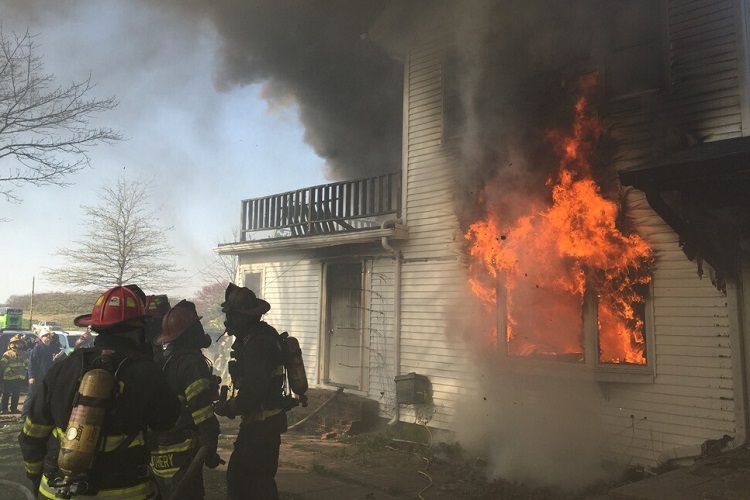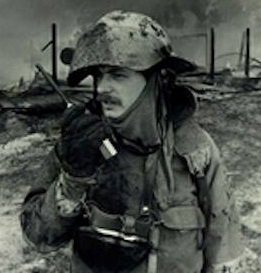

Photo by Tony Greco.
By Vincent Wolfe
For Part 1 of this article, click HERE
Who among you reading this have seen, took part in or trained to perform a reverse lay? Have personnel been trained and are hose beds loaded to facilitate hand jacking supply lines?
The Enemy
There are many examples of the increased threats created by modern fuel loads in residential structures. There is no shortage of side-by-side comparisons of modern fuels vs. legacy fuels in fire development. These offer vivid side-by-side comparisons of the intensity and speed at which modern fuels develop and spread within residences. Yet, with these facts, figures, and proven examples, the Home Builders Association’s conclusions still do not support the inclusion of residential sprinklers. What are you and your organization doing to educate your personnel and the public to these hazards? Remember, we do not have to wait until an incident occurs to do things to protect life. Public education saves lives.
As serious as the fire conditions have become, the associated hazards with the other products of combustion are equally lethal. We have battled carbon monoxide forever. Now, we have become aware of the lethality of hydrogen cyanide. The Fire and Smoke Coalition has reported extensively on these hazards and offered suggestions to ensure our safety and survival on the fireground. Have you educated yourself and your personnel to these hazards?
The Playing Field
As stated earlier, the lightweight construction that made its appearance decades ago in commercial structures has come to devour residential construction. Trusses routinely support both roofs and floors in modern construction. The same collapse hazards that caused us to revise commercial firefighting tactics are now commonplace in modern residential structures. Heavy fire conditions under truss supported residential roofs deserve the same cautions afforded to commercial structures with similar conditions. Truss floor supports have already begun to show as a threat to operating personnel in residential structures. What are you doing to educate yourself and others to the existence of these hazards and the associated threats?
Tactical Considerations
The switch in tactics from indirect attack to interior unburned side attacks was met with great enthusiasm by firefighters. The downside of the switch is that it led to an upturn in injuries and deaths. Improvements in the fire resistance and thermal protection of our personal protective equipment (PPE), the advantages of self-contained breathing apparatus (SCBA), and the addition of hoods took the brunt of the blame for these tragic events. Our PPE is designed to protect us from hostile conditions, not to allow us to crawl into them.
Another tactical aspect that affected these situations was a lack of understanding of tactical ventilation techniques. During the prior decades, fireground ventilation was limited because tactical consideration focused on trapping heat to convert the water to steam. Time, effort, and energy had to be spent to train fire officers to recognize the needs for ventilation and the tactical considerations to accomplish these operations. Decades later, we still struggle to accomplish these tactical considerations. Understanding that having water supply ready to control the increased intensity of the fire and the misuse of positive pressure ventilation fans have compromised firegrounds.
RELATED: Humpday Hangout: Science and Tactics ‖ Miller: Heavyweight Tactics for Lightweight Apartment Fire ‖ Engdahl: Tactical Use of Positive-Pressure Ventilation and Small Water Droplets
In some areas, this is a result of a lack of truck company responses to structural incidents which limits the availability of personnel to be assigned to these responsibilities. Some larger organizations still struggle to have staffed truck companies or, if they are staffed, struggle to have them meet these tactical needs on the fire scene.
As mentioned earlier, nothing has stood still during these years. The enemy as well as the battlefield have changed. We will not take the time to rehash those changes at this time. My challenge to you is to research and compare the fire development time line from the International Fire Service Training Association and the Kill the Flashover/National Institute of Standards and Technology and Flow Path Management. How do the differences in these two charts affect your tactical decision making?
Real life, Today and Tomorrow
What are we facing? What will we face? We all have significant numbers of older stick-built homes with real floor joists and roof rafters. However, few of these structures are still furnished with legacy fuels. So, we have a structure capable of resisting fire buildup, but it is still generating tremendous amounts of heat and smoke. We must develop tactics for these combinations.
New residential construction is dominated by lightweight truss construction in the roofs and floors. The exteriors are insulated and then wrapped in vapor barriers. Windows are multipane and add to the total insulation of the structures; they are furnished with the modern fuels mentioned above. The end result is a structure with minimal fire resistance and heavy fire, heat, and smoke generation probabilities. How do your tactical considerations and decisions change with these structures?
Our Allies (Or…Are They, Really?)
I am certain that this segment will transcend firefighters and fire officers. If we are all truly serious about safety on the incident scene and the continuation of these safety considerations, policies, and practices, we must all research and adapt to what the previously mentioned organizations are studying, researching and reporting to us regarding fire behavior and buildup.
Firefighters must become knowledgeable of safety concerns regarding their gear vs. the conditions they are battling. We have agreed to risk our lives, but only for another viable life. Property will be replaced. Where decades ago we had to be told, “Fighting fire in combustible clothing is not safe,” today we need to be reminded that our gear has been built and tested against specific temperature levels. Ensure that those temperatures are as balanced as possible.
Fire officers (company level) train and work with your personal so they know beforehand what will be expected from them. Prove—prior to the incident—that you have their safety as your main concern. Be prepared to evaluate the balance of fire conditions and building construction hazards vs. safety of and the numbers of personnel available at any specific time. We equate ourselves to sports teams often, but rarely do we have all of our team members arrive at the same time.
Chief officers’ responsibilities lay as much on preincident preparation as it does on incident scene safety. Responsibilities span reviewing and analyzing research data, presenting that data to your personnel, and adapting tactics to maximize safety at the incident scene.
Collectively, we all share the responsibility to educate our customers. The hazards associated with modern interior fires are so severe that we need to take every opportunity possible to educate the public and convince them to practice proven fire safety practices.
Whether you are a firefighter or fire officer, all of these issues affect you. As a firefighter, you need to be able to recognize differences in the size and intensity of fire emergencies, be capable of making choices based on these differences, and be able to react when resources do not match the intensity of the emergency.
As a fire officer, depending on your rank or arrival order, your responsibility may be strategic or tactical. As a company level officer, you have a responsibility to train your personnel to be tactically astute and to recognize critical issues regarding the fire, the structure, or the tactical operations.
As a chief officer, you have the ultimate responsibility to understand and accept that conditions have changed drastically since you were a firefighter. You are trusted to support your personnel, ensuring that they have the tools and knowledge to operate effectively and efficiently on the fireground.
 Vincent Wolfe is the lead instructor at Vulcan Training Specialists. He has been active as a career and volunteer member since 1972, serving in ranks from firefighter through chief for organizations in Pennsylvania and North Carolina as well as in Iraq supporting Operation Iraqi Freedom. VWolfe@Vulcants.com.
Vincent Wolfe is the lead instructor at Vulcan Training Specialists. He has been active as a career and volunteer member since 1972, serving in ranks from firefighter through chief for organizations in Pennsylvania and North Carolina as well as in Iraq supporting Operation Iraqi Freedom. VWolfe@Vulcants.com.

